Category: Portland Home Inspection
These are blog posts related to Portland Home Inspection. We offer all the home inspection services you would expect; Electrical, Plumbing, Roof, Structure, Interior, Exterior, HVAC, Garage, and Grounds
As a realtor you usually need to say on the MLS if a home has an A/C unit or a heat pump. The following is some information I hope you find useful to correctly identify the unit.
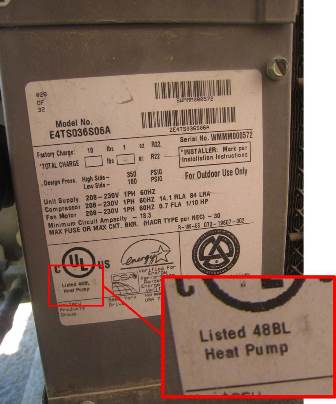
A heat pump is a single unit that works as an air conditioner in the summer and a heater in winter. In hot weather, a heat pump extracts heat energy out of the cold air inside the home and pumps it outside. In cold weather, it acts as an A/C in reverse — it extracts heat energy from the cold air outside and pumps it inside. When it is very cold outside, a heat pump needs help from a backup furnace. Nevertheless, homes with heat pumps generally have lower power bills.
The main part of a heat pump, the compressor, sits outside the house, and looks very similar to a typical A/C unit. Here are some ways to tell them apart. None of them are foolproof, so you may want to use more than one.
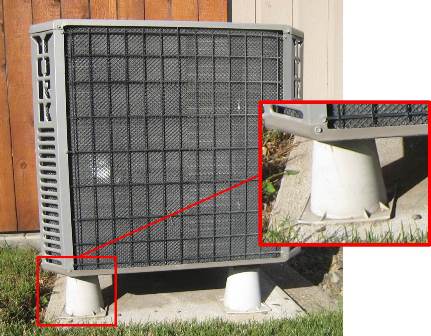
- Set the thermostat for just a few degrees above the current temperature (in heating mode) and go outside to see if the compressor is running. If you go too many degrees up, the backup furnace will come on, so make just a small adjustment in temperature. The only time this would not work is if it was very cold outside and the heat pump is in a defrost cycle.
- Look at the manufacturer plates on the outside compressor unit, or the air handler/furnace unit inside. It may say if it is a heat pump. It’s also a good idea to Google the serial number because sometimes the manufacturer plate says it is an air conditioning unit, but it can still be a heat pump.
- On a thermostat for a heat pump you should see a setting texted “emergency heat”. This is not foolproof because I have found A/C thermostats used for heat pumps. The emergency, or auxiliary, heat turns on when the heat pump alone cannot warm the house to the desired temperature and a backup furnace will come on to boost the temperature.
- Heat pumps will be up on 4 inch plastic legs that allow for water to drain when it is in defrost cycle. A/C units will usually sit directly on a cement or brick pad.
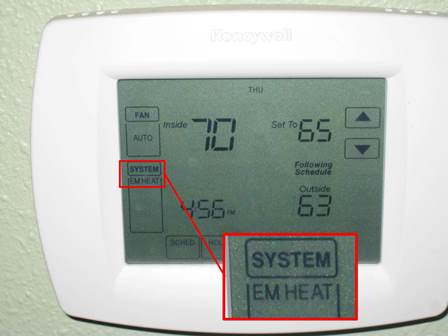
Further reading:
What’s the Difference Between a Heat Pump and an Air Conditioner?
A story and a list for your clients
The other day, I was doing a home inspection and found five rifles and a pistol in a closet which were blocking access to the crawlspace hatch. Home inspectors are not obligated to move personal property, according to the Standards of Practice, 308-408C-030,16. I especially do not want to have to move firearms–no judgment, guns just are not my thing. Fortunately, the real estate agent was willing to move them out of the closet. And the client, who had seen how the guns were originally in the closet, offered to put them back. I was grateful. I always try to leave no trace.
Then there was the cat. The cat was allowed in and out, so no problem, right? As it turns out, this was a very friendly and social cat, which followed me around during the inspection. This meant he was under my feet as I was working, creating a trip hazard. It also meant that I had to take extra steps to keep him out of the crawlspace while I was in there, so he wouldn’t get trapped. I was also very surprised when the cat climbed up my ladder, and joined the client and me in the attic! Okay, so now it was my responsibility to get the cat out of the attic, so he did not get trapped up there. The cat ended up scratching the client as I handed him down through the attic hatch. My client was a good sport about it, but really? These two events inspired me to make up a checklist you can give to your clients when their home is going to be inspected. You can download a PDF version of the list to give to the homeowner.
Tell the homeowner that on the day of the inspection they should please:
- Expect to be gone up to 4 hours.
- Have all animals out of house and yard or contained.
- Provide clear access to furnace, electrical panel, all doors and windows, and as many outlets as possible—especially GFCI outlets.
- Remove personal belongings that block clear access to the crawlspace hatch and attic hatch—especially if they are in a closet.
- Have all sinks clear of personal property so faucets and drains can be tested.
- Have all firearms and other weapons secured in a location where the home inspector will not be in danger, or be responsible for moving them.
- Leave all gates unlocked.
- Make sure all utilities are on and pilot lights are lit.
- Have all window coverings open so windows are accessible.
- Know that you may need to reset some clocks, because testing GFCI and AFCI circuits interrupts power.
I want to inspect as much of the house as possible for my client. So I do end up moving personal possessions and doing my best to return them the way that I found them. But it is best for everyone if I do not need to.
In regards to pets, an inspector I know in Olympia has been bitten twice by dogs that the owners said have never bitten before. A home inspector is a stranger in the house, and dogs may already sense big changes happening and be extra nervous. Dogs and cats should be removed or kenneled during a home inspection.
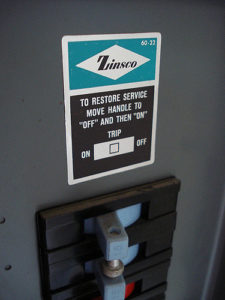
The longer a panel is in service, the more variable conditions and electrical loads it will experience. For instance, during a cold winter, someone may plug in a space heater that has never been run in that house before. It could directly start a fire at the panel from an overheated breaker. Or it could lead to a damaged breaker that does not trip when a later short circuit happens, such as a frayed lamp cord.

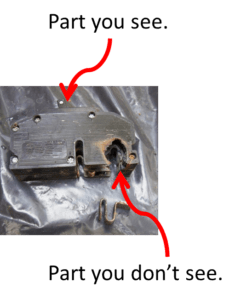
The Zinsco panels also have a history of problems with the breaker to bus bar connections, and corrosion at the busbar because certain components of the panel contain aluminum. These defects are often impossible to see until the breakers are removed — something a licensed electrician, and not a home inspector, should do. If a breaker has ever overheated in the past, it can melt to the bus bar. You don’t see the damage, but it can lead to overheating at the busbar, which can cause a fire to start at the panel.
Unfortunately, there are no programs to help homeowners with the expense of replacing these panels.
Minneapolis-St. Paul area home inspector and blogger for the Star Tribune, Reuben Salzman, makes a case for replacement rather than inspection.
Other information:
Home Inspection Process for Checking Electric Systems
Federal Pacific Circuit Breakers: Investigation Finds Decades of Danger